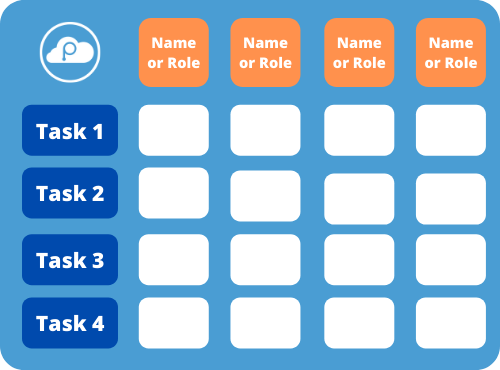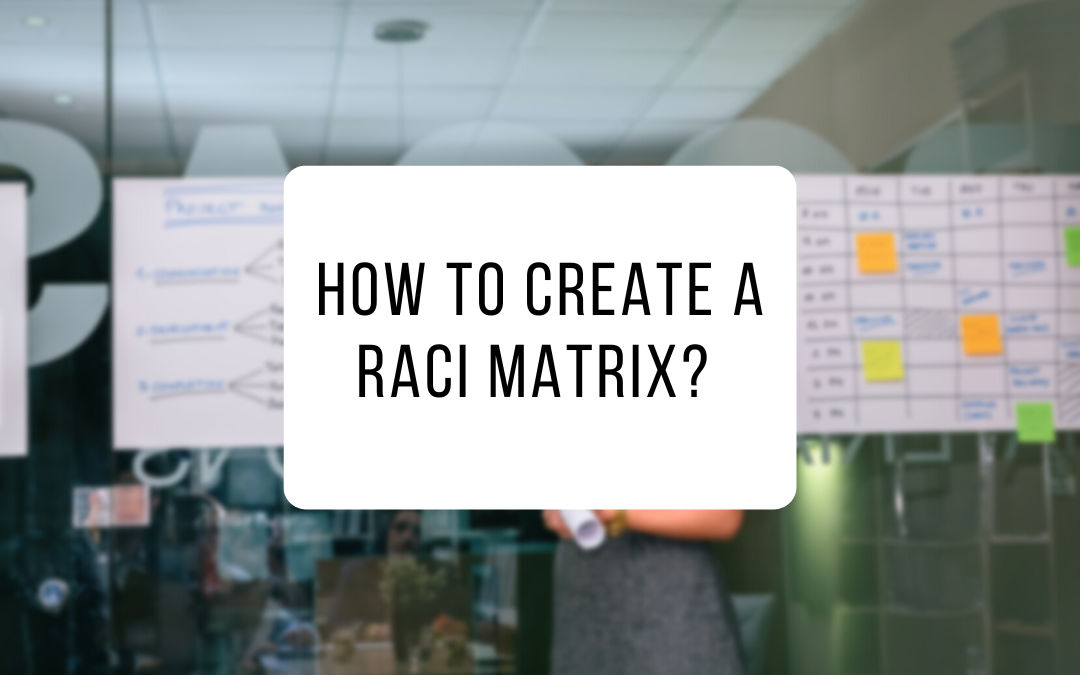In the field of project management, the RACI matrix is a reliable and proven method for determining the roles and responsibilities at each stage of a process or action plan. The RACI matrix is often used as a tool for managing responsibilities in ISO processes.
Moreover, the RACI matrix is not complicated to set up, and by following the advice in this article as a tutorial, you will quickly know how to make your own RACI matrix and you can also download the templates that we make available to you in different file formats.
Creation of the RACI matrix
For your RACI matrix to be effective, it is necessary to follow a certain procedure.
First, you will start by listing all the people who will be impacted or affected by the project. These people are called stakeholders. There are different types of functions that are often found as stakeholders and the most common are:
- project manager,
- steering committee,
- team member,
- customer,
- consultants etc.
Then you will have to determine what tasks need to be done in order to complete the project or the different steps of the process you want to manage. Like the stakeholders, they will have to be listed. Do not hesitate to divide them into several sub-tasks if they are too important and to group some tasks together if they form a coherent whole. Once this step has been completed, you will indicate the expected deliverable in order to validate that the task has been carried out correctly.
Now that this groundwork is done, we need to integrate these two lists into a double entry table.
- The first list with stakeholders will be placed in a row at the top of the table.
- The second list will be placed in a column on the left of the table.
Each stakeholder therefore crosses each task in your matrix as in the image below:

The last step is to fill in the matrix. To do this, you will have to ask yourself the right questions. Let’s see the explanations to understand what each letter corresponds to:
- R for Directorin charge of carrying out the task(s)
- A for Approverin charge of validating the completion of tasks
- C for Consultedin charge of providing information
- I for Informedmust be informed of progress
Now to determine who is in charge of what, we must ask ourselves:
- RWho should perform the task?
- AWho should validate the task?
- CWho can provide the necessary information?
- IWho needs to know about the task?
At each “stakeholder/task” intersection, fill in the correct letter.
You can keep the important information with you by saving the infographic above:
Director
Who is it?
This is the or the personwho will be responsible for carrying out the task.
Its mission
Carry out the task(s) assigned to him/her.
Characteristic
A director is required for each task.
Accountable
Who is it?
It is the person who is responsible for the work of the directors.
Its mission
Supervise the directors who perform the taskss for which he is responsible.
Characteristic
There is only one A pprobator per task .
Retrieved from
Who is it?
This is the person or persons who will provide advice or information.
Its mission
Helping directors with tips and information to complete a task more efficiently.
Characteristic
There can be several C onsult é s for a task .
Informed
Who is it?
This is the person(s) who must be aware of the task being performed.
Its mission
Be aware of the progress of the project tasks.
Characteristic
The I nformed do not intervene in the realization of the task.
The principles to be followed to make a RACI matrix
In order to build a reliable RACI matrix and have an optimal operation, it is necessary to follow certain principles, such as good management rules:
- There can be several Directors for a task.
- There is only one Approver per task.
- The Consulted must be in direct link with the Directors.
- There may be several Consulted for a task.
- There must always be at least one Director and an Approver on each task.
- The people Informed do not intervene in the realization of the task.
If you follow all these principles of the RACI matrix, it will help you improve your project management at work.
The advantages of the RACI matrix
The RACI matrix, as we said in our previous explanations, has several advantages, particularly in the field of project management, but not only. The RACI matrix is first of all clear for the distribution and understanding of the roles and responsibilities of each stakeholder, it can be used on any project whatever its size, it allows to avoid duplication
Conclusion: the RACI matrix, an example of a simple and effective managerial tool
The RACI matrix you created is now operational. You can download our templates in different formats to save time(Excel, PDF, Word and PowerPoint) and duplicate them for your different projects. It is a tool that is regularly used in many sectors such as distribution, restaurants and hotels, development and new technologies, or energy and nuclear.
However, it should be kept in mind that the matrix does not take into account the time required to complete an action and therefore cannot be used as a tool to evaluate the workload of stakeholders.
However, it is precisely this simplicity that makes its great strength because the RACI matrix gives, at a glance, a complete and precise vision of the distribution of the roles and responsibilities of each person in a project.
This is what inspired us to create create the different roles in PerfonyEven the addition of Contributors in Perfony brings us closer to a RASCI matrix… but that’s another story.
